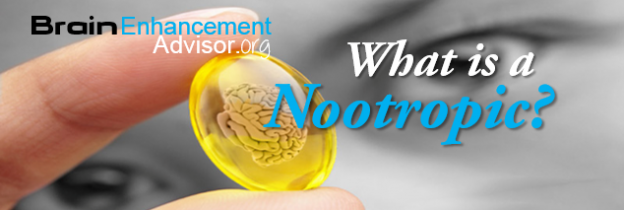
What is a Nootropic?
There is, undoubtedly, a controversial friction in our community about what is and is not properly within the affair of nootropics. Thus, there is a semantic and a pragmatic problem among the users. While words in science are better used when having precise definitions, drowning in eventual irrelevant discussions about linguistic frontiers can lead us to forget the point of what we are doing. In this article, we are going to introduce a tentative use of the term, acknowledging beforehand that nobody is the owner of any word and hence the term is subject to change according to the constantly changing circumstances.
Nootropics, also referred -inaccurately- as smart drugs, are drugs, supplements, nutraceuticals, and functional foods that improve one or more aspects of cognition, big word that refers to a capacity for information processing, applying knowledge, and changing preferences. Thus, these mental activities require a good use of memory, attention, executive functions, perception, language, psychomotor function, and probably mood and motivation (it does not really matter if you are a genius but you do not want to do anything with it).
While a smart drug is a colloquial term generally applied to a prescribed medication or off-label drug (such as Adderall or Ritalin -methylphenidate-) used in the first place to treat some kind of mental or cognitive disorder (such as ADHD); a nootropic is a technical term generally applied to a non-prescribed compound, natural or synthetic, which main objective is enhancing cognition and not to treat any mental condition or subjacent pathology directly. While the former category leads to tolerance and habit formation (including adverse effects on appetite, mood stability, cardiac function, sleep cycles etc), the second one is thought to involve very low prevalence of side effects. Thus, S. Giurgea and V. Skondia, a couple of Belgian pharmacologists who invented the first nootropic -Piracetam-, defined them as “cognitive boosting substances with extremely low toxicity that can be taken for long-term use”. Hence, keeping these two terms separate is useful: while all nootropics are (or should be) cognitive enhancers, not all cognitive enhancers are nootropics.
Nevertheless, the adjective “enhancer” is still problematic. Indeed, by enhancing you are not trying to cure; rather, instead of treating any deficit or pathology, you are trying to improve performance above baseline. Hence, strategies and risk profiles are different when using nootropics: they are not made to medicate, treat, or cure any illness, regardless of the possibility that enhancers could emerge from current efforts to discover drugs for neuropsychiatric disorders. When we read various posts on reddit “What is the best nootropic for depression/sexual dysfunction/ADHD?” we are, in semantic terms, diluting the value of the word.
Just to make things more complicated, there is also an inescapable subjective value of the word enhance. While a computer scientist might enjoy the benefits of Phenylpiracetam while programming, a painter may find it rather stressful and eventually prefer Phenibut for some relaxation; and hence, creativity. This is the problem when nootropic users discuss about recreational drugs usage. Human creativity is difficult to define and measure, but it is undoubtedly an important cognitive process. This makes it an interesting challenge for modern neuroscientific exploration – especially given the current interest in developing cognitive enhancers for commercial and clinical uses.
There are similarities between the typical traits of creative people and the subjective psychological characteristics of the psychedelic (hallucinogenic) drug experience. This phenomenon was studied in a number of small trials and case studies in the 1960s. Results were inconclusive, and the quality of these studies – by modern research standards – was merely anecdotal. Nevertheless, with today’s current renaissance in psychedelic drug research and the growing interest in cognitive enhancing drugs, now may be the time to re-visit these studies with contemporary research methods.

